(with Brian Dixon)
Headphones are a great luxury when you travel -- They deliver better sound, provide over-ear coverage for sound isolation from your fellow passengers, and even can add active noise cancellation technology to reduce the hiss of air conditioning and roar of engines.
But in today's world of cramped airlines and slogging though airports, even foldable headphones like the JVC HA-NC250 Noise Canceling Headphones (see previous post) just take up too much space in my carry-on. So it's time to break out the tiny earphones.
Given their small size, you can't ask for too much sound perfection from earphones, especially because you'll likely be listening with them in noisy environments (streets, subway, airplanes) and on portable MP3 players with compressed music.
What you do want, given reasonable sound, is a good fit (to block outside sound) while still being comfortable to wear for extended periods. Some people can't stand earbuds that insert in the ear (typically with replaceable earpieces), while others don't like the style that hooks over your outer ear (typically with replaceable nets).
But for my travels, I want an in-ear bud to block outside sound, so the big issue is the comfort of the earpiece that's going to nestle up in there.
JVC has a couple new interesting options in earphones, the higher-end JVC Bi-Metal Headphones (HA-FX300, $99) and the JVC Air-Cushion Headphones (HA-FX66, $29).
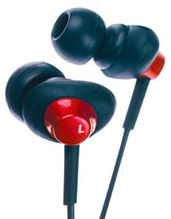 The JVC HA-FX66 Air-Cushion Headphones are designed for a secure fit while remaining comfortable. They have an angled earpiece that inserts in the ear, while the base nestles securely inside the outer ear. They're available in blue, black, red, and white, at a street price down to $20.85.
The JVC HA-FX66 Air-Cushion Headphones are designed for a secure fit while remaining comfortable. They have an angled earpiece that inserts in the ear, while the base nestles securely inside the outer ear. They're available in blue, black, red, and white, at a street price down to $20.85.
JVC provides several options for getting a comfortable fit with both of these earphones -- you can try out three sizes of soft silicon rubber earpieces for a comfort fit, and one memory foam earpiece for a customized fit. And both have nice design features for the cord, with a sliding cord joiner to make it easy to wrap up, and a friction noise reduction cord that reduce noise from moving and rubbing the cord.
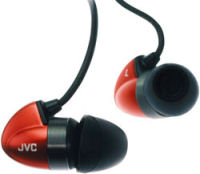 The high-end JVC HA-FX300 Bi-Metal Headphones incorporate several new technologies for clearer sound, including an aluminum evaporation diaphragm (more accurate high-frequency detail), a Bi-METAL structure (reduces vibration and energy loss), an aluminum housing (reduces resonance) and an oxygen-free copper cord (minimizes transmission loss). They're available in black, red, and bronze for $99.95.
The high-end JVC HA-FX300 Bi-Metal Headphones incorporate several new technologies for clearer sound, including an aluminum evaporation diaphragm (more accurate high-frequency detail), a Bi-METAL structure (reduces vibration and energy loss), an aluminum housing (reduces resonance) and an oxygen-free copper cord (minimizes transmission loss). They're available in black, red, and bronze for $99.95.
They have a contoured and angled design, with the cord running directly down the face, but did not fit as snugly in the ear -- which some people may like, but we found them too easy to pop out
The bottom line on earphones is to find a style that's comfortable for you for extended wear, and that offers a range of earpiece options like these JVC designs. While more expensive designs can sound better, especially in quieter listening environments, you may find other features that make the deal for you.
For me, for example, the Sennheiser CX 400 Ear Canal Headphones ($80, see previous post) have good sound and small and shallow ear canal adapters that nestle comfortably in my ear. Plus they have the bonus feature of a short cable that reduces dangling when I stash my media player in my shirt pocket (although it gets tight for hooking to the in-seat audio or to a computer, which is why they include a separate extender cable).
And as a reminder: Please practice good hygiene if you share earbuds by cleaning off the accumulated ear wax (ick!), and keep the volume down so you don't blow out your ears with the speakers that you've wedged in your ears (ouch!).
See my Audio Accessories Gallery for details and related products
 Find the JVC Air-Cushion Headphones on Amazon.com
Find the JVC Air-Cushion Headphones on Amazon.com
 The Apple iPhone has been a tremendous success in revitalizing the smartphone concept. The iPhone combines phone, PDA, and Web usage -- with the full iPod player experience (syncing content with iTunes), mobile phone, plus Wi-Fi wireless networking.
The Apple iPhone has been a tremendous success in revitalizing the smartphone concept. The iPhone combines phone, PDA, and Web usage -- with the full iPod player experience (syncing content with iTunes), mobile phone, plus Wi-Fi wireless networking. 
 Adobe has released the new version of
Adobe has released the new version of 
 I'm here in Las Vegas for
I'm here in Las Vegas for 
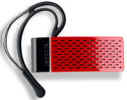 The
The 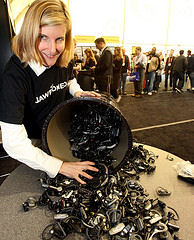 But Aliph returned this year with an even better blast -- the company set up a booth in the
But Aliph returned this year with an even better blast -- the company set up a booth in the 
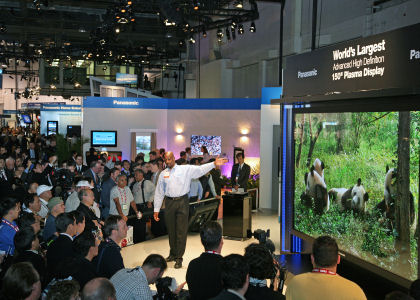 (CEA)
(CEA)


 So here's an iconic design that satisfies these constraints, the
So here's an iconic design that satisfies these constraints, the 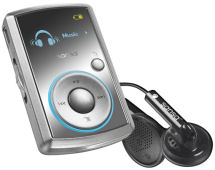 If you like the idea of a tiny music player that's easy to carry, then check out the
If you like the idea of a tiny music player that's easy to carry, then check out the  For more music, plus videos, still in a light package, the flash-based
For more music, plus videos, still in a light package, the flash-based  The
The  The high-end
The high-end